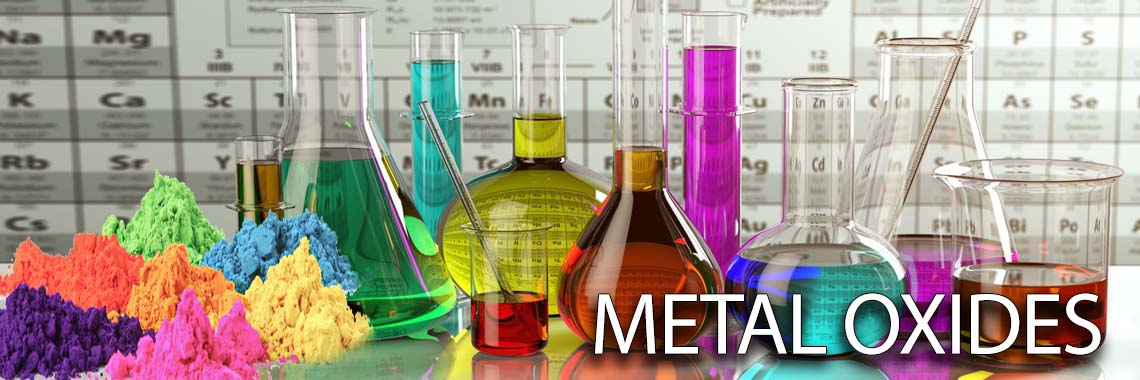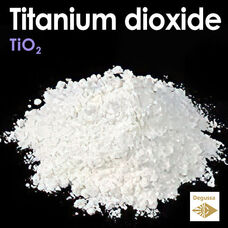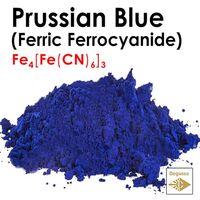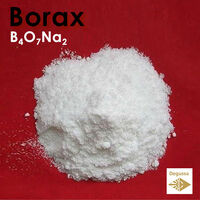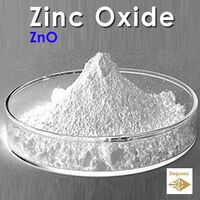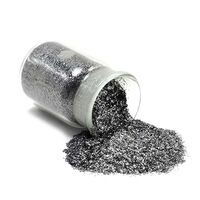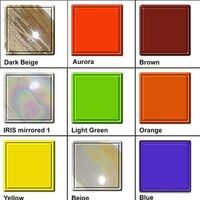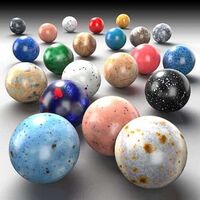What is Titanium Dioxide? The Put and Take Testing Method of Titanium Dioxide Glaze. How to get Cool Crystal Effects with Titanium Dioxide Ceramic Glaze?
TiO2
Titanium Dioxide (TiO2) also known as titanium(IV) oxide or titania. When used as a pigment, it is called titanium white, Pigment White 6 (PW6). Titanium dioxide is the most widely used white pigment because of its brightness and very high refractive index. TiO2 is also an effective opacifier in powder form, where it is employed as a pigment to provide whiteness and opacity to products. In paint, it is often referred to offhandedly as "brilliant white", "the perfect white", "the whitest white", or other similar terms. Opacity is improved by optimal sizing of the titanium dioxide particles. All pigments for ceramics are intermixable so why not get creative and experiment by missing your own completely fresh color. During the firing process, the colors fuse extra vigorously creating purity, intensity, and brilliance. The colors are stronger, therefore, significantly less percentage is needed to create vivid colors making them excessively cost-effective.
How to use Titanium Dioxide in the pottery:
Titanium is the strongest white pigment known for many uses, in ceramics the whiteness (and opacity) it imparts to glazes is due to its tendency to crystallize during cooling. Titanium dioxide is used in glazes as an opacifier. It can be used as an additive to enliven (variegate, crystallize) the color and texture of glazes by introducing crystallization. Rutile works in a similar manner, typically both become saturated in the melt beyond about 5-6%, producing a dry and unstable glaze surface. In moderate amounts, it encourages strong melts, durable surfaces, and rich visual textures. When using ceramic pigments in glazes, usually in concentrations of 1–10%, a little more care must be taken because some pigment systems react with materials in a glaze.
Formula: TiO2
Molar Mass: 79.866 g/mol
Form: white powder
CAS Number: 13463-67-7
Density: 4.23 g/cm³
Synonyms: Titanium dioxide, Titanium(IV) oxide, Titania, Rutile, Anatase, Brookite, Flamenco, Hombitan, Titafrance, Titandioxid, Tiofine, Tioxide, Tipaque, Titanox, Rayox, Bayertitan, Titanic anhydride, Rutiox CR, Zopaque LDC
TITANIUM DIOXIDE - Titanium(IV) Oxide Ceramic Pigments and Stains
- Brand: Degussa
- Product Code: Oxide - Titanium Dioxide - TiO2
- SKU: TiO2
- Availability: 545
-
0.59€
Available Options
Related Products
PRUSSIAN BLUE - Ferric ferrocyanide, Iron hexacyanoferrate - A Journey into Berlin Blue: History, Chemistry, and Applications
Fe4[Fe(CN)6]3 Prussian Blue is a deep blue pigment that has been used in various applications, including art,..
1.59€ 1.99€
BORAX - Improves glaze's frit and produces brighter vivid colors
B4O7Na2 Borax, also known as sodium borate, sodium tetraborate, or disodium tetraborate, is a naturally occurring m..
0.99€
GRAPHITE - Pure Carbon for Pottery Graphene Oxide (GO) Allotrope of carbon
C Graphene is an allotrope of carbon consisting of a single layer of atoms arranged in a hexagonal lattice nanostru..
1.99€
Tags: oxide

